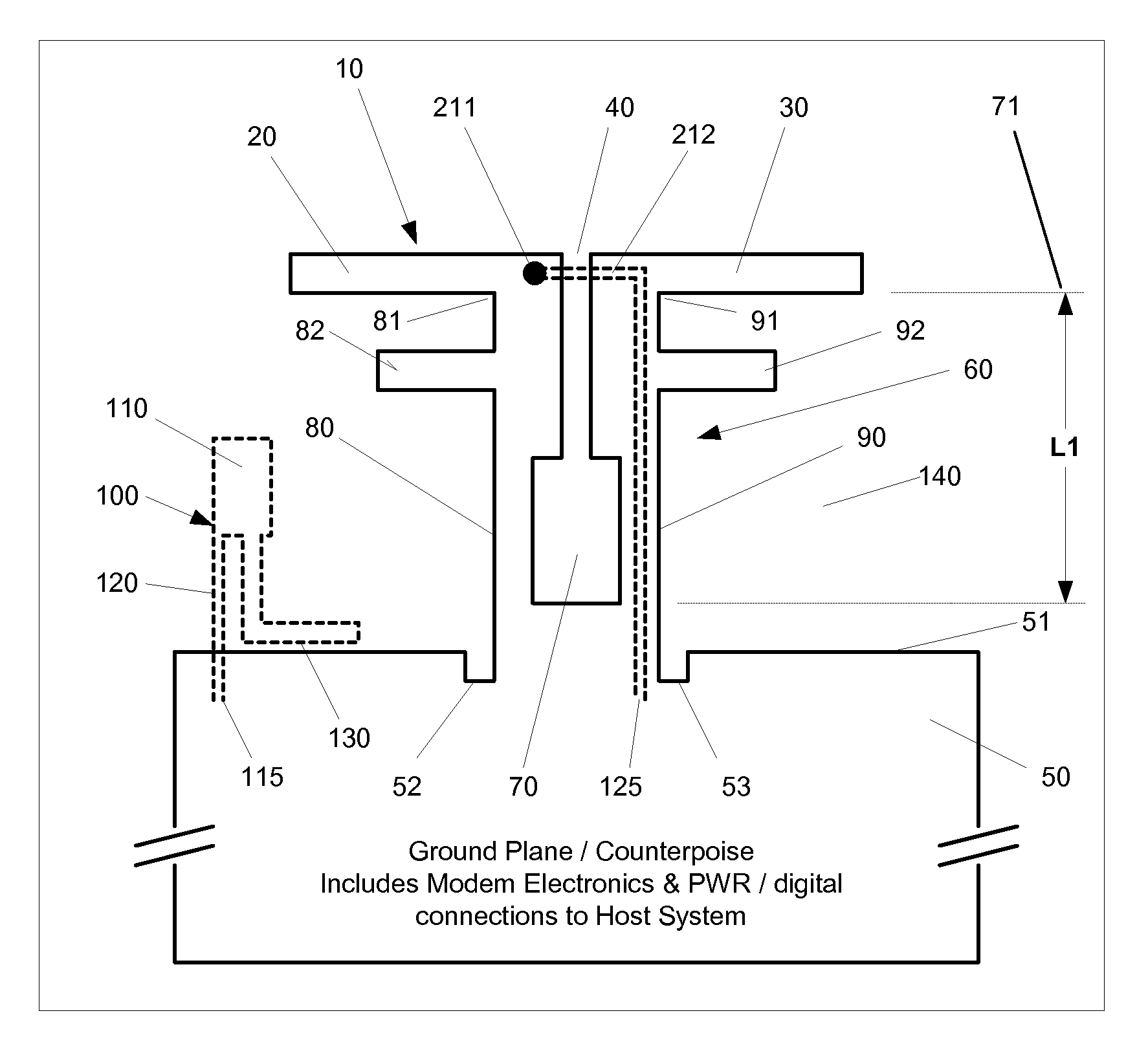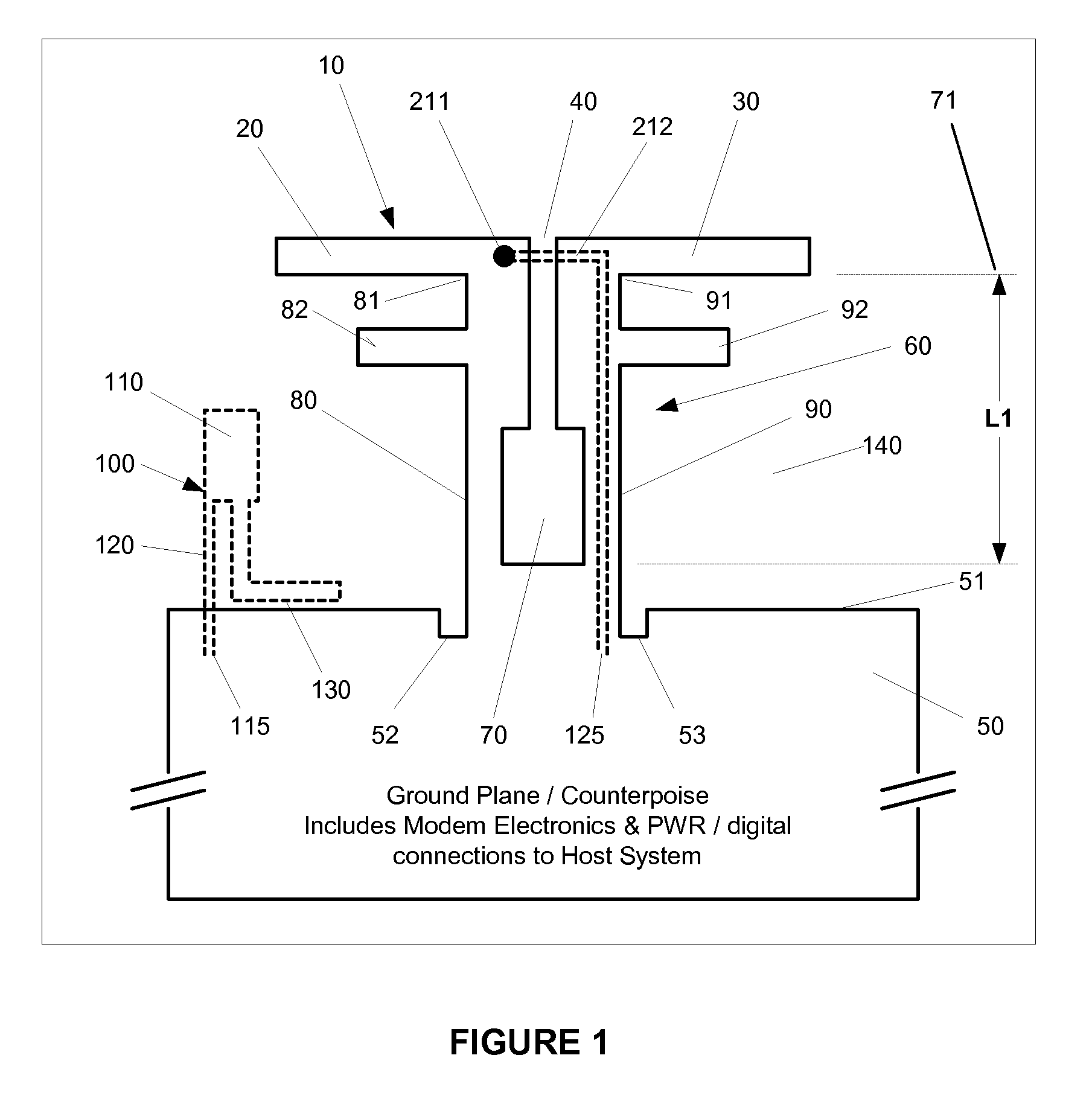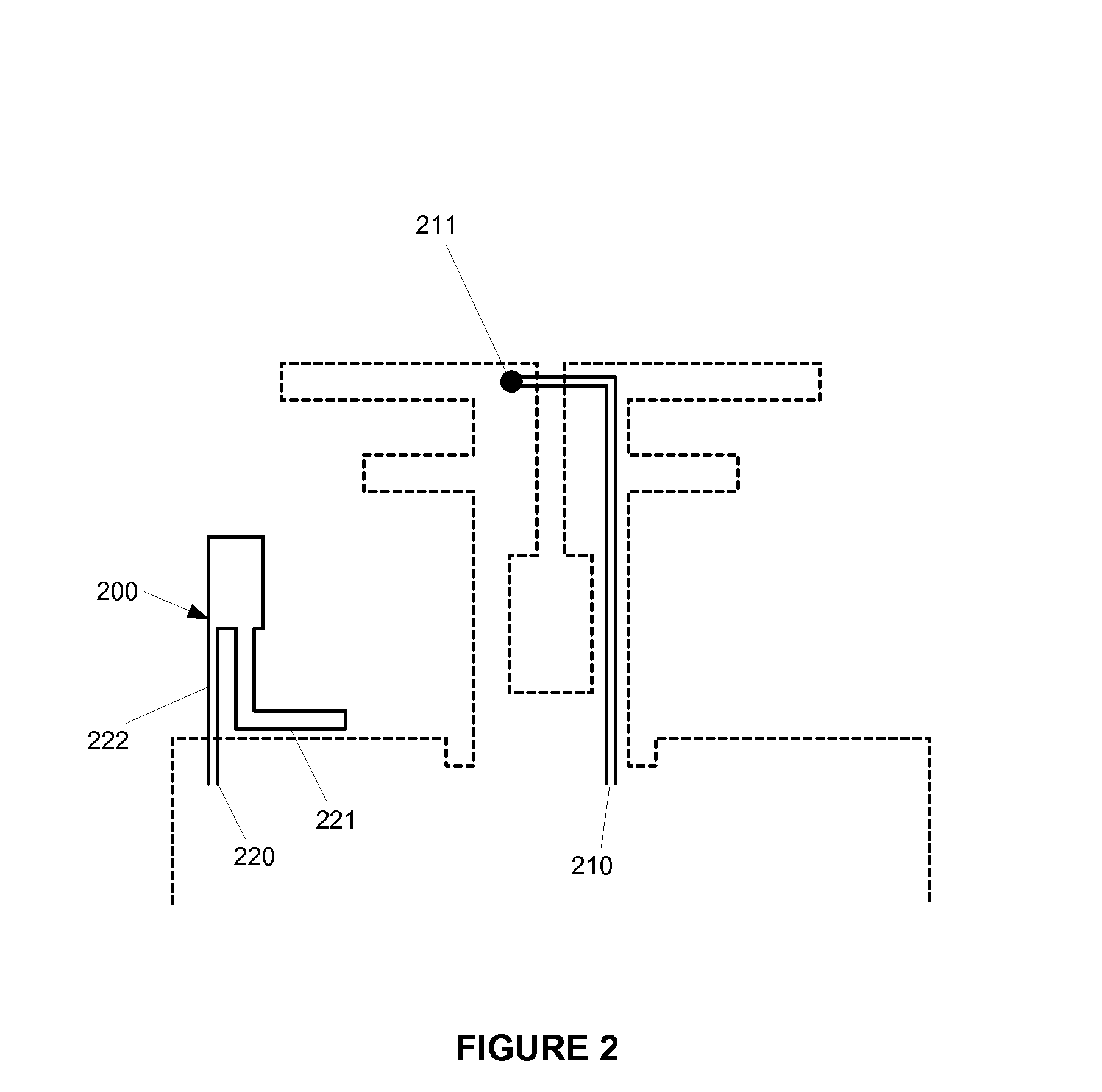Compact diversity antenna system
a technology of diversity and antenna system, applied in the field of compact antenna system, can solve the problems of large number of precisely manufactured components, difficult to provide a compact antenna system, and high complexity of the antenna system
- Summary
- Abstract
- Description
- Claims
- Application Information
AI Technical Summary
Benefits of technology
Problems solved by technology
Method used
Image
Examples
example 1
[0060]The following examples are directed towards compact diversity antenna systems, and thus examples herein are directed toward compact design technology. In particular, these examples feature printed circuit board antenna designs, which are known in the art and are used for many applications as they are compact, economical, and easy to manufacture. It is obvious to a worker skilled in the art that other means, such as lengths of wire and coaxial cable, could also be used in construction of a multiple antenna system according to an embodiment of the present invention.
[0061]With reference to FIGS. 1 and 2, one embodiment of the present invention is illustrated having two antennas. FIG. 1 illustrates one layer of a printed circuit board having the following features comprising part of the present invention in accordance with Example 1. A first antenna 10 is depicted as a simple dipole comprising two radiating bodies 20 and 30, the radiating bodies separated by a gap 40. The first an...
example 2
[0065]FIG. 3 depicts two sides of a printed circuit board in a second example embodiment, being an extension to the embodiment of Example 1, wherein a second monopole antenna 320 is placed on the opposite side of the passive element 370 of the first monopole antenna 310. The second monopole antenna 320 operates analogously to the first monopole antenna 310 in Example 1, and comprises a radiating body 330, a series inductor 340 that connects from this body 330 to the transmission line 360, and shunt capacitor 350 coupling this second monopole antenna 330 to the ground plane 50. Second monopole antenna 320 is placed in a spaced-apart configuration with passive element 370, at a distance that allows passive element 370 to absorb and re-radiate electromagnetic radiation from second monopole antenna 320 to produce a desired radiation pattern. In particular, passive element 370 acts as a reflector as is known in the art, and also reduces the electromagnetic radiation seen by first monopol...
example 3
[0066]FIGS. 4 and 5 depict two sides of a printed circuit board in a third example embodiment, being an extension to the example embodiment of Example 2, wherein an additional dipole antenna 450 is provided extending, at substantially right angles at the 90 degree fold 485, out of the plane containing the antenna elements of Example 2: the first dipole antenna 410, passive element 420, second monopole antenna 430 and additional monopole antenna 440. This second dipole 450 is effectively orthogonal to all the other coplanar antennas. The additional dipole antenna 450 comprises a first radiating body 460, with top loading portion 461 added to allow for a reduction in length requirements, and a second radiating body 470. The second radiating body 470 further comprises a connecting portion 471, a first arm 472, and a second arm 473, defining a cavity 480. The ground plane 474 of the microstrip transmission line 477 is connected at a first end 491 to one radiating body of the first dipol...
PUM
 Login to View More
Login to View More Abstract
Description
Claims
Application Information
 Login to View More
Login to View More - R&D
- Intellectual Property
- Life Sciences
- Materials
- Tech Scout
- Unparalleled Data Quality
- Higher Quality Content
- 60% Fewer Hallucinations
Browse by: Latest US Patents, China's latest patents, Technical Efficacy Thesaurus, Application Domain, Technology Topic, Popular Technical Reports.
© 2025 PatSnap. All rights reserved.Legal|Privacy policy|Modern Slavery Act Transparency Statement|Sitemap|About US| Contact US: help@patsnap.com



